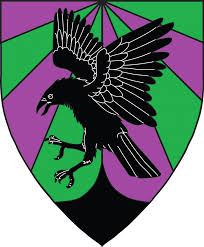Barony of Guildford
 | |
|---|---|
| Founded | 621 TA |
| Size | Minor Kingdom |
| Fealty | Western Reaches |
| Ruler | Noel Guildford, Thirteenth Baron of Guildford |
| Hex | 6414 |
The Barony of Guildford is the easternmost of the Middle Reaches barony bordered on the west by the Shadowyarn Mountains. A garrison fort was built at Thunderdale in 622 TA and quickly became the capital of the barony. Thunderdale used its strong defensive position as base from which to send out scouting parties to clear the trade routes of orcs and bandits. The fort is now a ruins overlooking the town below, but the government seat is still run from a large manor house that has grown over the decades.
While the other Middle Reaches baronies focused on farming and ranching the vast tracts of rich prairie, Guildford has always been closely aligned with the Durinshold dwarves. Quarries dot the foothills of the mountains, and mining is common in the region. Shipments of stone bound for the Middle Reaches towns along the Lesser Farthing Road are the lifeblood of the Guildford economy.
Guildford continues to have very strong relationships with the dwarves, and the recently-built Durinsgate Castle, Bishopshill Tower and Westhall Castle provide outstanding protection for the barony in times of war.
The current baron is Noel Guildford, Thirteenth Baron of Guildford, commonly called the Feasting King.
It was the Baron's youngest son, Rutland Guildford, who in 900 TA discovered the arrival of the Castle of the South Wind during the invasion of the Runebound Warriors. Rutland was awarded the silver Dwarven Cross for his reports to the Crown.
Two of Guildford's sons, Baring and Tolbert, were killed during the Crown's adventure to the Void.
Baronies of the Middle Reaches
In order to secure a safe trade passage west to the Shadowyarn Mountains and the Pass of Merchants, the Paladin King Hubert Wyrmslayer established in 621 TA the three baronies of the Middle Reaches: Rockingham, Middlewich and Guildford. These followed the Lesser Farthing Road, each extending approximately 100 miles north and south of the main merchant line.